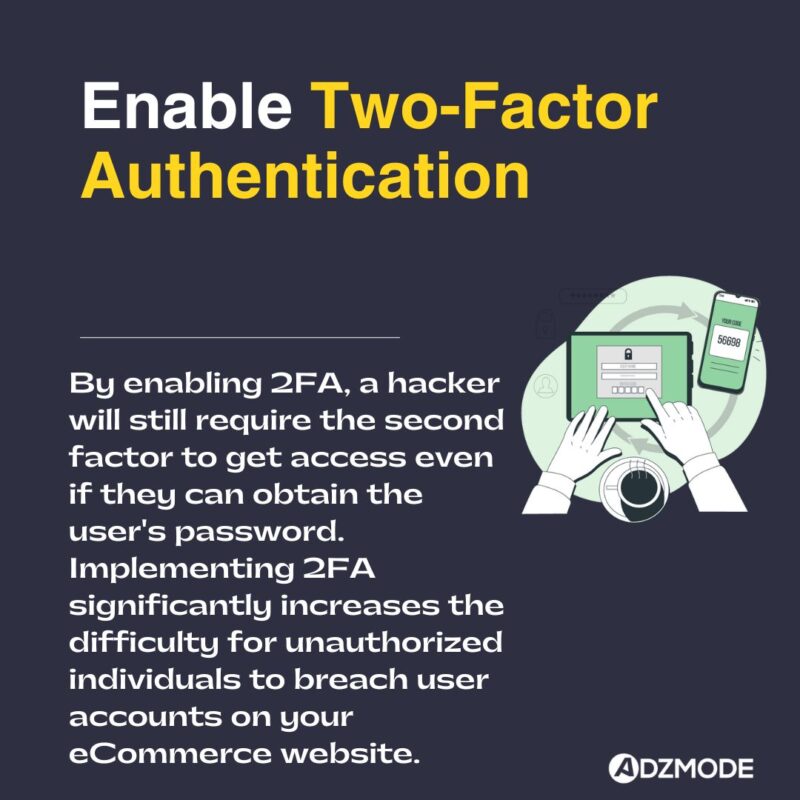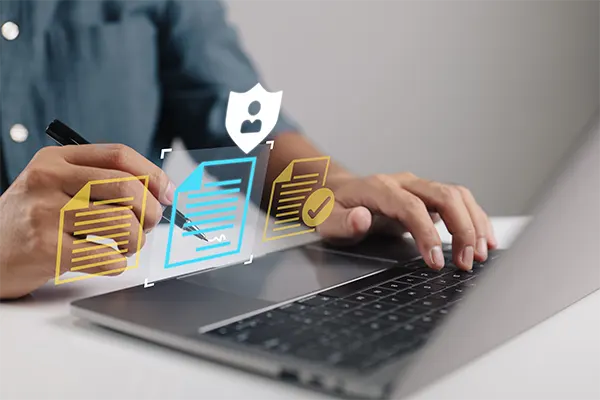
In our digital era, websites are the cornerstone of online presence for businesses, organizations, and individuals. However, the rising tide of cyber threats underscores the critical importance of website security. Safeguarding your website against potential risks and vulnerabilities is paramount to protecting sensitive data and maintaining trust with users. In this comprehensive guide, we’ll delve into the best security practices for website development, equipping you with the knowledge and tools to fortify your digital assets against malicious actors.
- Keep Software Updated:
Regularly update your website’s software, including content management systems (CMS), plugins, and themes, to patch security vulnerabilities and prevent exploitation by cybercriminals. Enable automatic updates and stay vigilant for security patches released by software vendors to ensure your website remains protected against emerging threats.
2. Implement HTTPS Encryption:
Secure your website with HTTPS encryption to protect data transmitted between users’ browsers and the web server from interception and eavesdropping. HTTPS encryption is essential for safeguarding sensitive information such as login credentials, payment details, and personal data.

3. Utilize Strong Passwords:
Enforce the use of strong, complex passwords for user accounts and administrative access to prevent unauthorized entry to your website. Encourage users to create unique passwords containing a mix of characters and consider implementing multi-factor authentication (MFA) for an added layer of security.
4. Regular Backups:
Regularly back up your website’s data and files to mitigate the impact of data loss or compromise due to cyber attacks or technical failures. Store backups securely in offsite locations or cloud storage services and test restoration procedures periodically to ensure data integrity and availability.

5. Implement Web Application Firewall (WAF):
Deploy a web application firewall (WAF) to protect your website against common web-based attacks, including SQL injection, cross-site scripting (XSS), and distributed denial-of-service (DDoS) attacks. WAFs analyze incoming traffic and filter out malicious requests, helping to safeguard your website from unauthorized access and exploitation. Join the ranks of satisfied clients who have experienced the magic of our web development expertise! With a focus on creativity, collaboration, and customer satisfaction, we’re committed to helping you achieve your online goals as the best web development company in India.
6. Secure File Uploads:
Implement stringent validation and security measures for file uploads to prevent attackers from uploading malicious files or executing arbitrary code on your server. Validate file types, size limits, and permissions for uploaded files and employ server-side security mechanisms to detect and block malicious uploads.

7. Role-Based Access Control (RBAC):
Implement role-based access control (RBAC) to limit access privileges based on user roles and responsibilities. Assign specific roles to users and grant access only to the resources and functionalities necessary for their tasks. Regularly review and audit user permissions to ensure compliance with security policies.
7. Security Headers:
Implement security headers such as Content Security Policy (CSP), X-Content-Type-Options, X-Frame-Options, and X-XSS-Protection to enhance your website’s security posture and mitigate common security risks. Configure security headers to restrict content loading from untrusted sources, prevent MIME type sniffing, and enable browser-based XSS protection.
8. Monitor and Audit Logs:
Implement logging and monitoring mechanisms to track user activities, system events, and security incidents on your website. Monitor access logs, error logs, and security logs for suspicious activities and configure alerts and notifications to promptly respond to potential security incidents.
Visit: user experience design principles
9. Stay Informed and Educated:
Stay informed about the latest security threats, vulnerabilities, and best practices in website development through continuous learning and education. Subscribe to security mailing lists, participate in security forums, and engage in regular security assessments to identify and address potential weaknesses in your website’s security posture.
10. Input Validation and Sanitization:
Implement robust input validation and sanitization mechanisms to prevent common web vulnerabilities, such as SQL injection, cross-site scripting (XSS), and command injection. Validate user input against predefined criteria, such as data types, length, and format, and sanitize input data to remove or escape potentially malicious characters. Utilize server-side validation and client-side validation to ensure the integrity and security of user input throughout the application.
11. Session Management and Authentication:
Implement secure session management and authentication mechanisms to verify the identity of users and protect sensitive data from unauthorized access. Utilize strong encryption algorithms, such as bcrypt or Argon2, to securely store and hash user passwords, and employ secure session tokens and cookies to maintain user sessions securely. Implement session expiration policies, session hijacking prevention measures, and account lockout mechanisms to mitigate the risk of unauthorized access and session hijacking attacks. With a keen eye for detail and a commitment to excellence, as the best digital marketing agency in India, we’ll help you achieve your digital goals and drive growth.

12. Content Security Policy (CSP):
Implement a Content Security Policy (CSP) to mitigate the risk of cross-site scripting (XSS) attacks by specifying trusted sources for loading content, scripts, and resources on your website. Define and enforce strict content security policies to restrict the execution of inline scripts, prevent data exfiltration, and mitigate the impact of client-side vulnerabilities. Regularly review and refine your CSP directives to ensure compatibility with your website’s functionality while enhancing security.
13. Data Encryption and Confidentiality:
Protect sensitive data and communications by implementing robust encryption and confidentiality measures throughout your website’s architecture. Utilize industry-standard encryption protocols, such as Transport Layer Security (TLS) or Secure Sockets Layer (SSL), to encrypt data in transit and protect against eavesdropping and interception. Encrypt sensitive data at rest using strong encryption algorithms and key management practices to safeguard against unauthorized access and data breaches.
14. Incident Response and Disaster Recovery:
Develop and implement an incident response plan and disaster recovery strategy to effectively respond to security incidents and mitigate their impact on your website and business operations. Define roles and responsibilities, establish communication channels, and outline procedures for incident detection, analysis, containment, eradication, and recovery. Conduct regular tabletop exercises and simulations to test the effectiveness of your incident response plan and ensure readiness to handle security incidents effectively.
15. Third-Party Integration Security:
Exercise caution when integrating third-party services, libraries, and APIs into your website, as they may introduce security risks and vulnerabilities. Conduct thorough security assessments and due diligence on third-party providers, evaluate their security practices and compliance certifications, and implement appropriate security controls and safeguards to mitigate the risk of supply chain attacks and data breaches. Regularly monitor and audit third-party integrations for security vulnerabilities and compliance with security standards.

17. Security Testing and Vulnerability Management:
Implement a comprehensive security testing and vulnerability management program to identify, assess, and remediate security vulnerabilities in your website’s code, configuration, and infrastructure. Conduct regular security assessments, including penetration testing, code reviews, and vulnerability scans, to identify weaknesses and gaps in your security posture. Prioritize remediation efforts based on risk severity and exploitability, and establish processes for tracking, monitoring, and verifying the resolution of identified vulnerabilities.
18. Security Compliance and Regulations:
Stay compliant with relevant security standards, regulations, and industry best practices to ensure the confidentiality, integrity, and availability of your website and sensitive data. Familiarize yourself with applicable data protection laws, such as the General Data Protection Regulation (GDPR) and the California Consumer Privacy Act (CCPA), and implement appropriate measures to protect user privacy and data rights. Maintain documentation of security policies, procedures, and controls to demonstrate compliance with regulatory requirements and industry standards.

19. User Education and Awareness:
Educate website users about security best practices, privacy considerations, and safe browsing habits to empower them to protect themselves and their data online. Provide clear guidance on creating strong passwords, recognizing phishing attempts, and safeguarding personal information, and encourage users to stay informed about the latest security threats and vulnerabilities. Incorporate security awareness training and resources into your website, such as FAQs, tutorials, and security tips, to promote a culture of security awareness and responsibility among users.
20. Continuous Improvement and Adaptation:
Embrace a culture of continuous improvement and adaptation to address evolving security threats, technologies, and business requirements effectively. Stay informed about emerging security trends, developments, and best practices, and proactively evaluate and update your security measures and controls to reflect changes in the threat landscape and business environment. Engage with the security community, participate in forums and conferences, and collaborate with industry peers to share insights, lessons learned, and best practices for enhancing website security.
Visit: how to optimize landing pages
Conclusion:
In conclusion, implementing best security practices for website development is essential to mitigate risks, protect sensitive data, and safeguard your digital assets against cyber threats and attacks. By incorporating robust security measures, such as keeping software updated, implementing HTTPS encryption, utilizing strong passwords, and deploying web application firewalls, you can fortify your website’s defenses and enhance resilience against potential vulnerabilities and exploits. Additionally, adopting a proactive approach to security, including regular security testing, incident response planning, and user education, enables you to stay ahead of emerging threats and adapt to evolving security challenges effectively. Remember, security is a shared responsibility, and by prioritizing security in website development and maintenance, you can create a safer and more secure online environment for yourself and your users.
Why Adzmode?
- More than 800 happy clients across the globe
- Managing Digital Marketing Since 2011
- Indomitable Digital Marketing Strategies
- Founded by team of IIT Delhi Certified Digital Marketers
- 100% Transparency in Operations and Ad Budgets.
Share Your Project Requirements With Us






